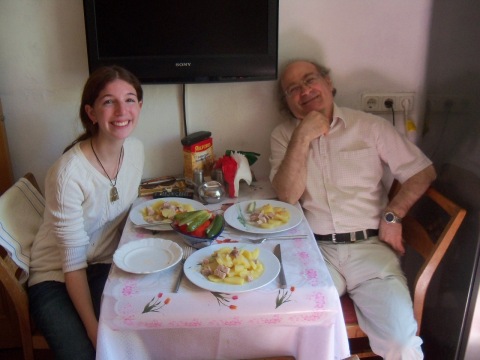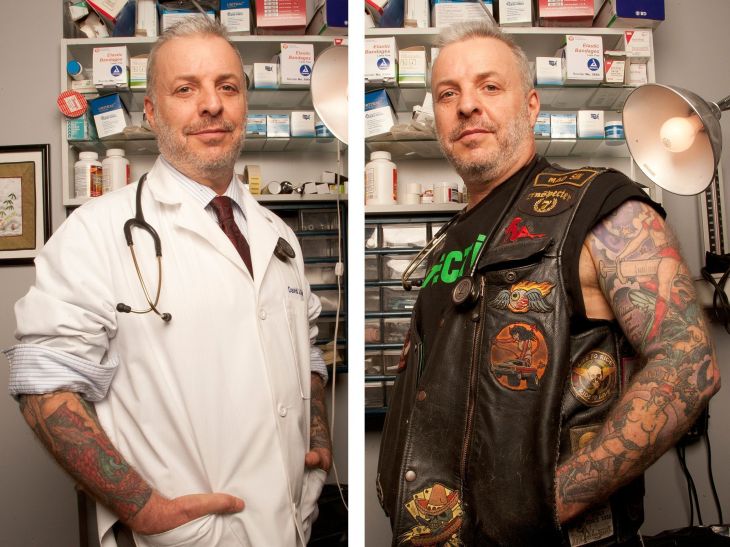Last week, my best friend decided she wanted to get her ears pierced and her mom agreed on one condition: I accompany her. So before our weekly run for groceries at Trader Joe’s, we made a stop at Angel Tattoos. She was absolutely terrified of going in, so I walked in before her and started chatting with the artists inside. About 45 minutes of nervous deliberation, pacing, and questions about everything-that-could-possibly-go-wrong later, she left with newfound confidence and a bit of titanium. I, meanwhile, left with ideas whirling around my mind about the thing-power of the ink and metal we put into ourselves, the stigmas of “uncleanliness” associated with such body modifications, and the preconceived notions placed upon those with purposefully “weird” bodies.
I remember very well when I got my ears pierced for the first time at eight. I’d begged my mom for years and years to let me have pretty little gem stones become a permanent part of who I was. I would do chores to show her I was responsible and could handle it, marked the days down on my calendar when we would go to Claire’s to get it done, and told her on a weekly basis to make sure she wouldn’t forget. Even – perhaps especially – at that age, I had experienced the “energetic vitality” and “curious ability of inanimate things to animate, to act, to produce effects dramatic and subtle” that Bennett speaks of in her work (Bennett 5, 6). At 14, thing-power became even more palpably real when upon entering a jewelry store, my great uncle whom I hadn’t seen since I left Russia told me to pick out any pair of diamond earrings I wanted. To remind me I always had a family even if they were thousands of miles away. Those words elicited so much shock and incredulity that I stood flustered, blushing, and unable to move for a few seconds. Maybe it was the value of diamonds as deemed by society or the surprise at receiving a gift from a near-stranger or the earrings as a symbol that I never had to feel alone… or maybe it was a combination of all three and something kind of magical besides, that overcame me in the moment and “bec[ame] the decisive force catalysing” a new relationship with a long-lost part of my heritage and family (Bennett 9).

In any case, I have seen both in my life and in others, how meaningful a piece of jewelry or a bit of permanently-etched body art can be. Friends have gotten matching quotes with their family members, used pictures as eternal hopes and reminders, and had piercings bring motivation to stop destructive habits and build esteem instead. Yet there still exist negative prejudices in such means of expression and change.
Before applying for Busch Gardens, for example, I learned that employees were not allowed to have any visible tattoos, nor anything exceeding two lobe piercings on each ear. I spent the entire interview making sure my hair covered everything!
Although I think society is becoming all-around more open towards difference, tattoos and piercings are still largely considered “unclean,” carrying associations with drug use, gang involvement, and other manifestations of rebellion in many cultures. In her discussions of purity, danger, and dirty, Mary Douglas mentions instances of sacredness through the unclean, such as when the left hand is used in dance by the Oyo Yoruba or ritual incest is part of the sacralisation of the Bushong king. However, “it is only specific individuals on specified occasions who can break the rules” (Douglas 197). Similarly, piercings are normal and acceptable… But only if it’s on the lobe and you happen to be female. In such a case, it looks classy and professional. Anything that deviates away from that can make someone look “suspicious” or “dangerous” or “unnormal.” I noticed quite a few of my classmates, and I too, wrote for the first “Weirding” assignment that a person whose body is covered in tattoos would be considered weird. It’s a paradigm that has been engrained into our way of thinking and it is a challenge to break away from the labels and assumptions. Similar to the hoods in Kinney’s article, it is easy to profile and classify someone as the “type” of person who would have a tattoo sleeve or facial piercings, but the danger of this discrimination and what is absolutely vital to remember is that “[it] robs people of the power to determine the value of their own words, actions, and choices” (Kinney 108).

To tie it all back: recalling my first time setting foot in a tattoo parlor at 16, I felt as if I was being enveloped by posters of scantily-clad girls, pit bulls, roses with larger-than-life thorns, and grim reapers. Simply the place itself scared me. Immediately seeing the tattoos on his arms, I imagined my piercer, Danny, to be a burly and formidable character I wouldn’t want to cross. In a few minutes, though, I realised he was one of the nicest and most laid-back guys I’d ever meet, and I think back to that whenever I walk into a tattoo shop now. I’ve found that it’s often those who have known difference – whether unchosen or deliberate – who are amongst the most open to others different from themselves, and most willing to recognise the thing-power of the objects surrounding them. “It’s what’s under the hood [and the tattoos] that counts” and on the other side, it becomes easy to see the masterpiece that once only appeared to be the mess.
Works Cited:
Bennett, Jane. Vibrant Matter: A Political Ecology of Things. Durham: Duke UP, 2010. Print.
Douglas, Mary. Purity and Danger: An Analysis of Concepts of Pollution and Taboo. London: Routledge & K. Paul, 1976. Print.
Kinney, Alison. Hood. New York: Bloomsbury, 2016. Print.